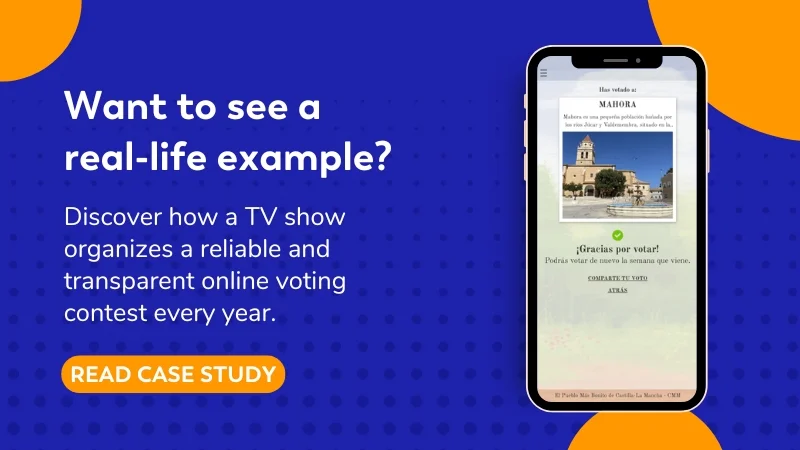One of the most common methods to determine the winners or finalists of awards is through popular voting using an online voting tool. This strategy boosts the event’s visibility and allows users to decide the outcome, rather than relying on an internal jury, which may raise questions about impartiality. While online voting simplifies processes and reduces costs, it comes with its own challenges. However, addressing these challenges from the outset can maximize results and help avoid problems.
At Easypromos, we have over 15 years of experience managing contests where the outcome is determined through online voting. We understand that online voting has the power to maximize your visibility, while it also posing the significant challenge of maintaining the integrity of the contest against users you cannot control.
Here are the key tips for organizing a successful online voting contest:
Key 1: Provide Each Candidate With a Unique Link to Share and Gather Votes
A unique link for each candidate helps promote their entry and maximizes the contest’s visibility. To achieve this, it should be a requirement that each candidate has an exclusive link, and the means to easily obtain it and share it. Additionally, their supporters should also be able to share this link effortlessly.
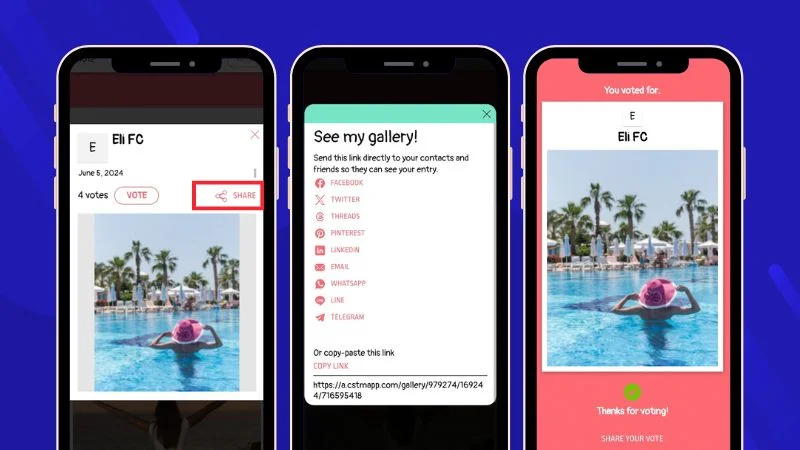
It’s crucial that shared content be engaging. Most social networks, like Facebook, Instagram, or X, as well as messaging apps like WhatsApp or Telegram, display a preview of the link. This preview should include key information about the candidate, such as the photo or video to vote for, along with basic information. This will motivate their contacts to click on the link, taking them directly to the candidate’s entry, and vote for it.
It’s also advisable for the contest administrator to have tools to easily send the nominees their unique links and automate actions, such as encouraging voters to share the entry they voted for. Thus, generating the viral effect every administrator aims for.
You can test how this sharing system works with this DEMO of a photo contest with voting.
Key 2: Voters must identify themselves and register in the voting tool
While it would be ideal for users to vote anonymously, this is not a viable option for serious online contests, as the main challenge is minimizing fraud. In the online world, where there is no control over who will vote, dishonest practices are common. The first line of defense is identifying voters through a registration process.
Registration can be as simple as asking for the user’s name and email, along with their consent to the privacy policy. You can also request additional information, such as a phone number or age, and make registration easier by offering social login options via Facebook or Google.
Additionally, it is always a good idea to reward users for their vote, for example, by holding a prize draw among all participants who have registered to vote.
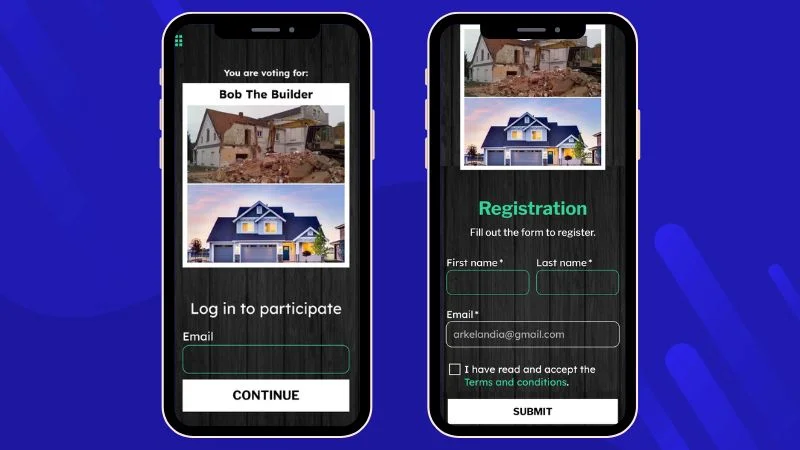
Having the voter’s email address and consent allows sending an automated email after voting to thank them for their participation, remind them of the unique link for the candidate they voted for, and encourage them to ask for more votes, thus generating a viral effect.
Key 3: Fraud control is a must in a voting tool
Fraud control is the most important aspect of any voting contest. If there is a significant prize, it’s likely that some users will attempt fraudulent actions that wouldn’t be possible in an offline environment. Online voting can raise suspicions due to the existence of vote-buying websites, vote-exchange forums, creation of invalid email accounts, bots, etc.
Fortunately, there are mechanisms against fraudulent actions. This is why a registration form is so important, as it allows to apply fraud control techniques, such as email verification, blocking temporary emails, detecting suspicious IPs, controlling device frequency, and identifying patterns of vote-buying or vote-exchanging online, among others.
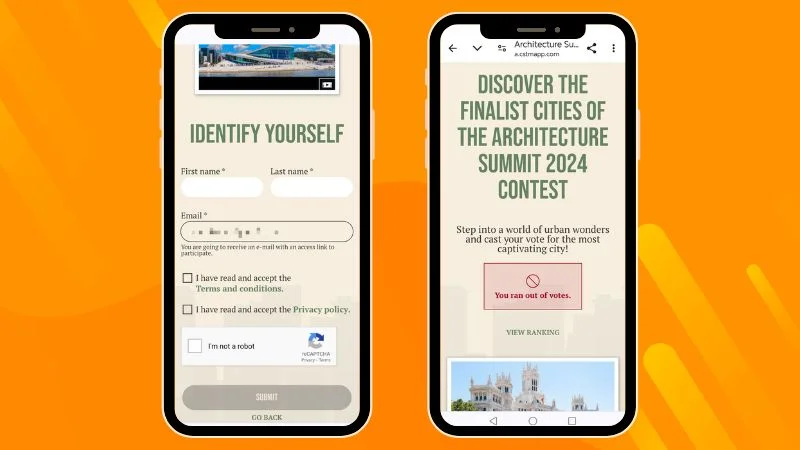
Additionally, a voting system should include analysis tools and alerts during the voting period to proactively address potential threats. A useful tip is to include a clause in the contest’s legal terms that allows the administrator to remove votes or candidates deemed fraudulent.
Learn more about the Easypromos’ fraud control system.
Key 4: Hide vote counters and rankings
An effective technique to minimize fraud is to hide the vote counter or ranking. If candidates cannot compare themselves to others, they won’t know how much effort is needed to secure more votes, which reduces the temptation to engage in fraudulent practices. A good idea is to keep the vote counters visible and hide them in the last three days of the voting period.
Another option to minimize fraud is not to select the final winner through popular vote, but rather to have the popular votes determine the top three finalists, with a jury selecting the winner.
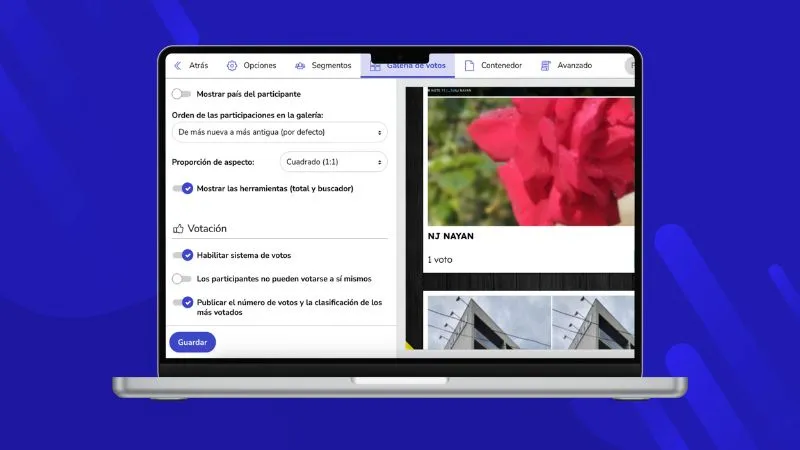
Key 5: Enabling daily voting frequency securely is key
Allowing users to vote once a day is an effective strategy to increase visibility for the contest. This daily voting frequency motivates users to return to the contest, generating more visits, more shared links, and therefore, more virality and visibility.
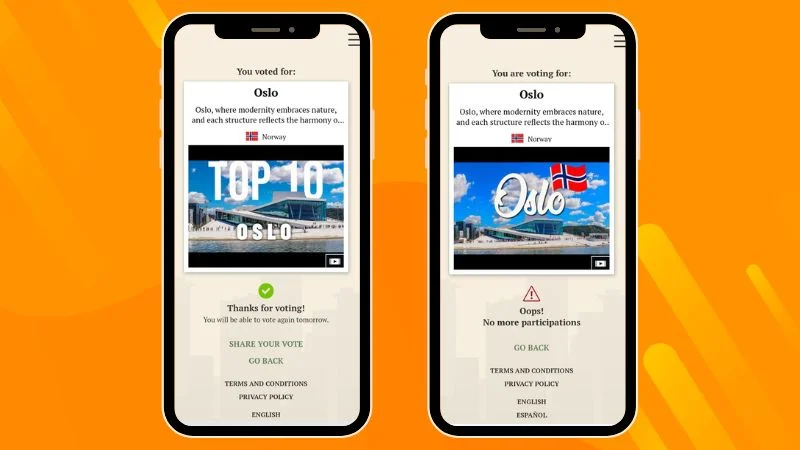
Key 6: Categories and stages system
Many awards contests include multiple categories or stages, which helps extend the event over time and thus gain more visibility. Categories also allow for multiple winners. It is essential that the contest can independently manage each category to simplify administration. Each category should have its own start and end dates, voting system, and ranking. Additionally, the system should allow for easy management of its stages, showing previous results, such as in contests with semifinal and final rounds.

A great example is the following case study: a television contest where viewers vote for the most beautiful town in the region. The region is divided into provinces, and users vote weekly for the towns in their province, eventually selecting the best town from each province and, ultimately, the prettiest town in the entire region.
Key 7: Voting tool must showcase all the strengths of the candidates
In an awards contest, it’s crucial for candidates to present their best selves. As the organizer, you should provide all the tools to highlight the entries. Each entry should be able to include videos, photos, documents, social media links, and other elements that best showcase the candidates.

If you’re thinking about organizing awards and want to gain visibility through online voting, consider our Voting Contest application, which incorporates all the features we’ve developed over more than a decade of experience in the contest industry. We will help you make your contest a success, from the nomination and selection phase to the voting phase with fraud control.
